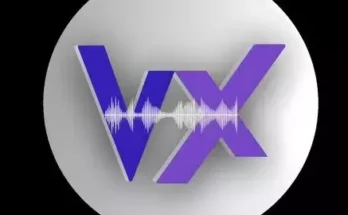Melodic CAGED Soloing TUTORiAL
FANTASTiC | 05 September 2022 | 218 MB
Stay focused with this step-by-step learning program designed by our expert team of music educators.
Day 1. How to Make Music With CAGED
Learn about the fundamentals of melodic soloing.
If you’re checking out this Master Class, chances are that you’re familiar with the CAGED system, but need some help taking it from shapes → music.
The object of this first lesson is to help you understand how to make the CAGED system come alive and take your solos to the next level. Each day, you’ll review the CAGED positions and learn a fresh approach for connecting them using some inventive melodic lines.
We’ll kick off Day 1 with a sampler platter of the techniques you’ll work on over the next nine days, including slides, linear playing, double stops, and more.
Days 2-5
Explore the merits of linear playing and hone your double stops.
Days 2-3. Linear Soloing
Linear soloing involves moving freely along strings, as opposed to getting locked into positions for extended periods of time. Exploring this approach will help you achieve a greater sense of freedom and fluidity in your playing. These lesson have a lot of exercises to explore – over the next two days, you’ll work on linear soloing concepts in two different keys.
Rather than seeing the major scale only in blocks on the neck, these one-string exercises you’ll work on are a great opportunity to start seeing the major scale as a pattern of semitones and tones. This same pattern is consistent for major scales in every key.
Day 4. How to Play Melodic Double Stops
Today, we’ll zero in on how and where to use double stops in your lead guitar playing.
These two-note mini chords make it possible to highlight a single-line melody in 3rds, 6ths, or octaves. Double stops are a super effective technique for adding some flair into a melody. Additionally, they’re useful for moving between CAGED positions.
Consonant intervals of 3rds and 6ths tend to be the most useful intervals for harmonizing a melody, but it’s not uncommon to see melodies harmonized in 4ths too.
Day 5. How to Combine Positional and Linear Playing
It’s all coming together in this lesson! Here, you’ll combine the positional playing of the CAGED system with the linear techniques that you’ll have covered since the beginning of the Master Class.
Soloing is all about freedom of movement and melody across the fretboard. Linear playing is great for building melodic and lyrical solos that span across the neck.
Positional playing, on the other hand, is a concise way to find all of the notes in a scale or mode in one position of the fretboard without having to shift. Developing the ability to move between positional and linear playing will make you a supremely better improviser and allow all of your soloing ideas to flourish!
Days 6 & 7
Learn about the art of phrasing and use triads to further unlock your soloing options.
Day 6. How to Develop Your Phrasing
Throughout this Master Class, we’ve discussed the two approaches of positional and linear playing. Fluency across the neck is a crucial skill to feeling comfortable and confident when building a solo, but playing the notes is only the first step to building a great solo.
On Day 6, Sophie will introduce you to phrasing – the secret sauce in any great solo. Phrasing is the creation of musical sentences that are used to build a solo. Musical phrasing works in the same way as a literal spoken conversation that you might have between friends. Your sentences will carry greater meaning when you emphasize a particular word or break a sentence into separate clauses.
Sophie will guide you through some key skills that you can add to your back pocket to take your melodic phrasing to the next level.
Day 7. Connecting Positions Through Triads
Triads are incredibly useful as they allow you to connect the CAGED positions of the fretboard together. In this lesson, you’ll look at the triads of G major and C major across the top strings. You can apply these shapes to any key once you know where to build them.
When building a solo, triads add a whole new dimension to your playing and can be used to change the contour of a melody. However, it can be a bit formulaic to grind out only triads in your solo. The best way to use triads is to join them up with melodic phrases that you already know.
Sophie will take you through this method in greater detail during a creative jam. Triads can also help you out of a tight jam when connecting CAGED shapes across the fretboard. All in all, they’re a practical tool to have under your belt.
Days 8-10
Cap off the class with fun, music-first lessons based on bending and creativity.
Day 8. How to Incorporate Bends in CAGED
This lesson will be a little easier today, so kick back and enjoy another fun day of learning. Bends are an exciting way to add some flair and interest to a melody. Just like a road trip it’s all about where you start, and where you’re going.
Bends are useful devices that you can use to approach target notes in a scale or triad. Lots of players use bends to switch up their melodic phrasing and smooth out melodies.
Day 9. How to Get Beyond CAGED
The CAGED system is a great way to learn how to get around the fretboard, but all great improvisers know that you need to have the ability to think freely when you’re creating. Otherwise, you’ll get caught up overthinking and trying to theorize every musical decision that you make. We want to make music and feel as free as a bird when we’re improvising!
The trick to avoiding this common pitfall is to develop two separate mindsets: creative & analytical. The analytical thinking and practicing mindset can be used to generate and develop ideas. However, “true” improvisers want to free themselves of this when they are performing / improvising.
Today, you’ll going to learn how to let go and let the music flow!
Day 10. Recap & Challenge
For your Melodic CAGED graduation, we’ll review some key points from the past nine days of instruction and challenge you to compose your very own solo.




